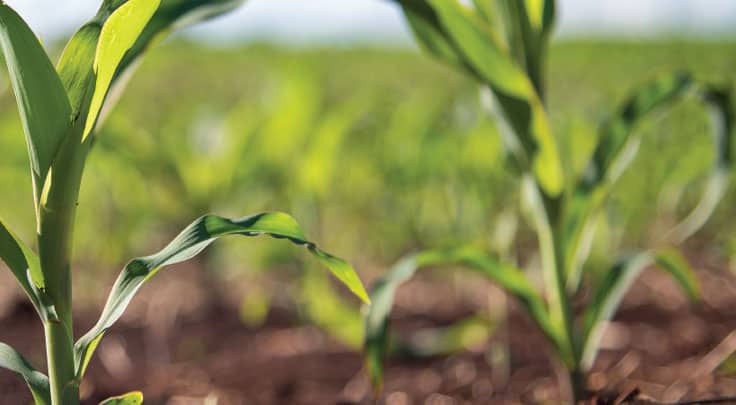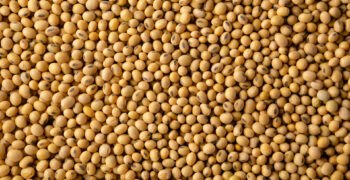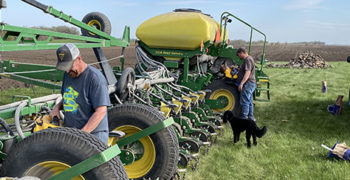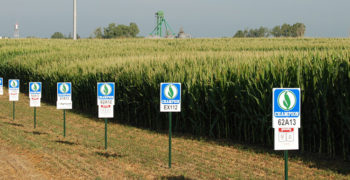Early crop vigor is a key agronomic variable to consider in selecting hybrids or varieties. Crop emergence — especially in adverse conditions — and stand establishment are fundamental to yield and stand at harvest. Uneven corn emergence, for example, can cause early-season problems as well as yield loss later in the crop year.
Final stand is a reflection of how many plants survived the growing season, starting at corn emergence. That final stand is impacted by a corn hybrid’s early crop vigor scores as well each seed’s germination capabilities. Even and consistent emergence is key to starting the crop off right and ultimately unlocking maximum yield potential. It starts well before the seed is even planted. Here are some of the factors that contribute to even corn and soybean emergence, stand count and ultimately, maximum yield.
What goes into a germination score?
A variety’s germination score is the percent of overall seed from a single lot number that is viable and able to germinate in a laboratory setting. Germination scores, located on a tag on every bag of seed, range based on temperature.
In a laboratory, a warm germination score is determined by placing a seed sample on a damp, spongy type of paper in a controlled environment at a temperature of 77 degrees Fahrenheit. After seven days, lab technicians count the germinated seeds to determine the percentage of the sample that will germinate viably under warm or near-ideal conditions.
A cold germination score, or the percentage of seed that will emerge under less-than-ideal conditions, is found through a process very similar to a warm germination test. To simulate cooler conditions, seeds are chilled overnight at 50 degrees, and then germinated at 77 degrees for seven days. The resulting percentage of seeds that successfully germinate in these conditions makes up the seed’s cold germination score.
Industry standards dictate that a good warm germination score for corn is around 95% or higher, while a good cold germination score is 85% or higher. For soybeans, a good warm germination score is 90% or higher. Starting with high-quality seed with germination scores at these levels or higher is important to strong, even crop emergence.
Consider early crop vigor, too
Early crop vigor scores are indications of the genetic ability of a corn hybrid or soybean variety to emerge after planting in stressful conditions. That’s compared to a germination score that’s more a function of initial seed quality and how it’s handled between the production facility, seed bag and planter hopper. There are always performance differences from product to product that directly affect their ability to emerge under a range of conditions like cool, crusted or saturated soils.
Champion Seed integrates plant breeders testing notes and conducts replicated research plots with hundreds of commercial and experimental hybrids that account for this kind of variability that is reflected in final stand count, emergence and crop vigor data for each product. The end result is clear early crop vigor ratings for each product.
Why consider early planting?
Research has suggested that planting early can increase yield. The data tend to be consistent and the industry has seen a shift to earlier planting dates, but the yield benefits do not come without added challenges, especially as it relates to soybean and corn emergence.
The trend toward earlier planting puts more emphasis on selecting hybrids and varieties with strong early crop vigor scores. When selecting seed and determining which product will be planted in which field, consider these factors in making those planting decisions since they influence crop residue and its ultimate impact on final crop yield:
- Tillage system: Conventional, minimum tillage, no-till or strip-till.
- Planting order: When will each field be planted in relation to others?
- Crop rotations: A corn-on-corn system has different implications for soil nutrition and crop residue compared to conventional corn-soybean rotations.

The weather around planting time and for 48 hours after planting also has a large influence on corn and soybean emergence and stand establishment. Consider this example: Soil temps are 50 degrees at planting time but the next day a cold spell is set to move in. In this case, the early plant vigor score of the seed should be considered when deciding to keep planting or wait until the soil warms back up.
More things to keep in mind
Final stand (plants per acre) at harvest is the difference between how many plants emerge after planting and how many plants put on a full-sized, harvestable ear. Many stand counts in the fall will be 1,000 to 3,000 plants per acre less than the number of healthy plants counted just a couple weeks after planting. The five-month growing season can be hard on a crop. Pests, disease and adverse soil and environmental conditions can reduce the number of viable plants before harvest.
Starting your crop year by planting a high-performance seed with strong germination scores is the foundation of an even and consistent stand and crop yield at harvest. Early crop vigor is the genetic ability that helps those seeds reach full potential when Mother Nature deals you a less than ideal hand in the spring. Plus, managing pests to maintain those plants all the way through the growing season and into the combine is an important variable in the formula to achieve maximum crop yield and a successful growing season.
Learn which products and technologies may be suited for your fields or to check and see what your vigor and emergence scores are for this year’s crop.



